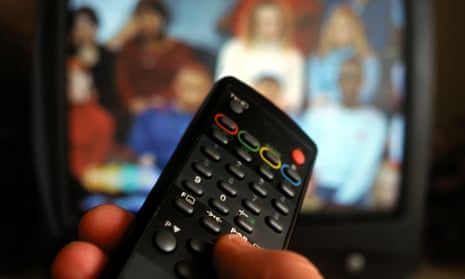The lives of black men in the US have long been adversely affected by negative public perceptions. We are often turned away from jobs because we are not the “right fit”. While on the streets, we are regularly treated by police as dangerous suspects. Officer Darren Wilson, who shot and killed the unarmed black teenager Michael Brown in Ferguson, Missouri, described their alleged tussle by testifying: “when I grabbed him, the only way I can describe it is I felt like a five-year-old holding onto Hulk Hogan,” even though the two men had the same height.
In a 2011 study, Media Representations & Impact on the Lives of Black Men and Boys, conducted by The Opportunity Agenda, negative mass media portrayals were strongly linked with lower life expectations among black men. These portrayals, constantly reinforced in print media, on television, the internet, fiction shows, print advertising and video games, shape public views of and attitudes toward men of color. They not only help create barriers to advancement within our society, but also “make these positions seem natural and inevitable”.
Not much has changed since the 1970s when, as an undergraduate student at the University of Michigan, I conducted a study of two metropolitan Detroit dailies’ coverage of the 1967 urban riots. Pouring over those yellowing pages of archival newsprint, I discovered notable examples of blatant bias, misrepresentations of facts and poorly substantiated claims about particulars of acts of violence. In 1968, the National Advisory Commission on Civil Disorders reviewed coverage of the 1967 riots and faulted many newspapers for their “exaggeration of both mood and event” and “fail[ing] to report adequately on the causes and consequences of civil disorders and on the under lying problems of race relations.” The report went on to say: “They have not communicated to the majority of their audience – which is white – a sense of the degradation, misery and hopelessness of life in the ghetto.”
The Opportunity Agenda study also shows that these media distortions are multi-faceted, especially relative to real-world facts. For example, there is an overall under-representation of black men as ‘talking head’ experts, users of luxury items in print ads and as reliable and relatable characters with fully developed backgrounds in fiction shows and films. Overwhelming evidence exists of exaggerated associations of African-American men to drug-related crime, unemployment and poverty. “The idle black male on the street corner is not the ‘true face’ of poverty in America, but is the dominant one in the world as depicted by the media”, according to the study’s executive summary. Too many stories associate black men with intractable problems.
Men of color held in esteem by the media, while entirely worthy of praise, too often personify a circumscribed spectrum of human qualities. Prowess in sports, physical achievement in general and musicality are emphasized inordinately. Common role models depicted by the media such as rap or hip-hop stars and basketball players imply limited life choices. When is the last time you have seen a black college professor, doctor, lawyer or scientist selling a product? Many important dynamics that affect black lives, such as a history of economic disadvantage and a prevailing anti-black bias in society, don’t often make it to the presses or the screens.
The Opportunity Agenda study, funded by the Open Society Foundation’s Campaign for Black Male Achievement, also showed how these media misrepresentations create problematic attitudes in audiences, not the least of which being a persistent antagonism toward black men.
What we are also seeing play out among both white and black people is a hyped view of black boys and men being coupled with criminality and violence, a lack of empathy for black men and boys in trouble, less attention being paid to the bigger picture of social and economic disparity and increased public support of more rigorous approaches to social ills, such as police aggression and longer jail sentences.
In 2012, professor of political science, Bas W van Doorn at the College of Wooster in Ohio, analyzed images that ran with about 474 domestic US poverty-related stories in Time, Newsweek and US News and World Report from 1992 to 2010. In the images that ran alongside those stories in print, black people were overrepresented, appearing in more than half of the images, despite the fact that they made up only a quarter of people existing below the poverty line during that time frame.
Media images and words are known, according to the Opportunity Agenda study, to have the greatest impact on the perceptions of people with less real-world experience. People who have never interacted with a black family in their communities more easily embrace what the media tells them. The most negative impact is upon black individuals themselves. Derogatory portrayals can demoralize and reduce self-esteem. In worst case scenarios, black boys and men actually internalize biases and stereotypes and, through their behavior, reinforce and even perpetuate the misrepresentations. They become victims of perception.
Not only does the media’s reluctance to provide more balanced perspectives of our African-American male population worsen cultural division among all people, it enables judges to hand out harsher sentences, companies to deny jobs, banks to decline loans and the police to shoot indiscriminately. The mass media is certainly aware of its vast power to shape popular ideas, opinions and attitudes. They should become equally cognizant of their role as a mechanism of social change for the better of all.
Liberal sprinklings of black achievement are not enough to offset an uneven emphasis on the failure of black men. Besides working to eliminate obstacles to African-Americans entering newsroom and television positions, editors must start listening more closely to black constituencies, African-American TV and radio station managers, journalists, film producers and learning from their perspectives.
All media can and should choose words, images and news angles that give a fuller, more nuanced narrative of African-American men, as well as black history, culture and life in America, as a whole. People of color are individuals, not types.
